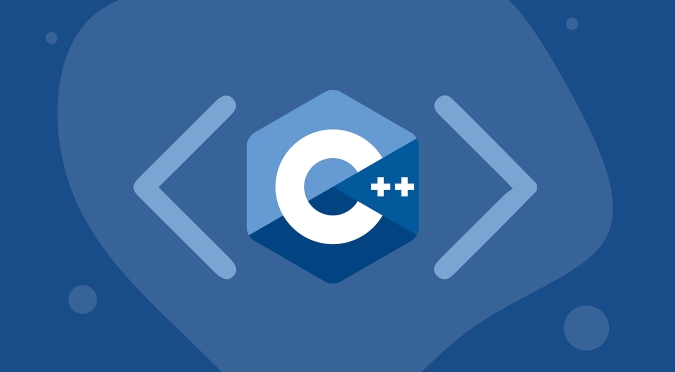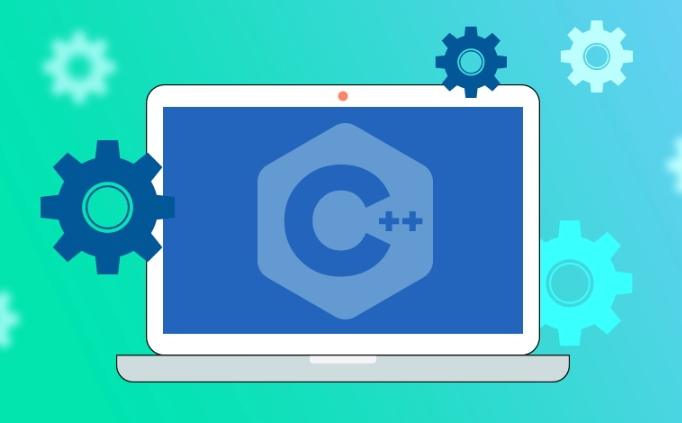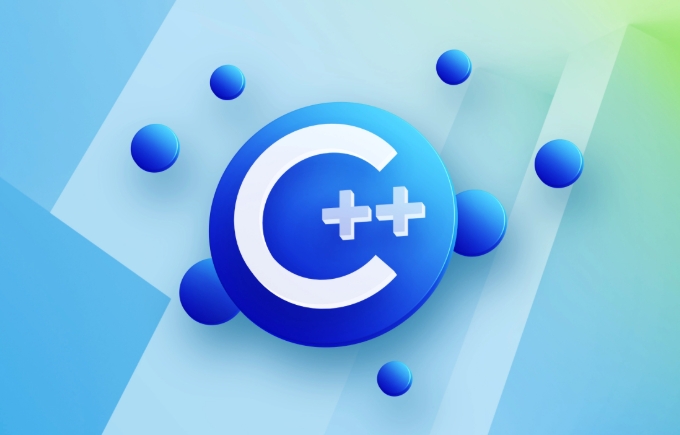In C, static_cast and dynamic_cast are two commonly used type conversion operators that are suitable for different scenarios and are significantly different. 1. Static_cast performs type conversion at compile time, suitable for conversion between basic data type conversion, upward transformation, enumeration to integer transformation, and classes with conversion constructors or type conversion operators; it does not perform runtime checks and is therefore not safe for downward transformation. 2. Dynamic_cast performs type checking at runtime, mainly used for downward transformation of polymorphic types, ensuring that the conversion is legal, and returning a null pointer or throwing an exception when it fails; it is suitable for scenarios where dynamic type checking is required, but the performance overhead is high. When selecting, which operator should be used based on the security of the conversion and whether the runtime check is required.

In C, type casting is the process of converting one data type to another. It is often used to deal with scenarios such as inheritance relationships, pointers and reference conversions. C provides a variety of type conversion operators, among which static_cast and dynamic_cast are the two most commonly used.

static_cast: Compile-determined type conversion
static_cast is a relatively common type conversion operator that works for most "reasonable" type conversions, such as conversions of basic data types, pointer or reference conversions between classes with explicit inheritance relationships (especially upward transformations), and some user-defined types conversions.
How to use:

double d = 3.14; int i = static_cast<int>(d); // Basic type conversion
Applicable scenarios:
- Convert floating point numbers into integers (will cut off)
- Upcasting: convert derived class pointers/references into base class
- Enumeration to integer conversion
- Convert between classes using conversion constructor or type conversion operator
Notice:
It does not perform runtime checks. If you use it for downcasting and the actual object is not the target type, then the behavior is undefined. In this case, dynamic_cast should be used.

dynamic_cast: Safe conversion for runtime check
dynamic_cast is mainly used to deal with conversions between polymorphic types, especially downward transformation. It checks whether the conversion is legal at runtime, and returns a null pointer (for pointers) or throws an exception (for references) if it fails.
How to use:
Base* basePtr = new Derived();
Derived* derivedPtr = dynamic_cast<Derived*>(basePtr);
if (derivedPtr) {
// Conversion is successful} else {
// basePtr actually points to the Base type and cannot be converted to Derived safely
}Applicable scenarios:
- Safely transform downward (must involve virtual functions, that is, polymorphic classes)
- Check the actual type of pointer or reference
- Type conversion in multiple inheritance
Performance issues:
Since dynamic_cast requires type checking at runtime, it is slower than static_cast . Use it only if it does require dynamic type checking.
How to choose static_cast or dynamic_cast?
These two casts are not interchangeable at will, they apply differently:
- If you know that conversion is necessarily safe, such as upward transformation, or conversion between basic types, use
static_cast - If you are not sure about the specific type and want to transform downward, and the target class contains virtual functions, use
dynamic_cast - If the possibility of a conversion failure exists and you want the program to detect it, choose
dynamic_cast - Don't use
static_castto do unsafe downward transitions, which can lead to crashes or undefined behavior
Basically that's it. Understanding the differences and application scenarios between these two casts can help you handle type conversion more safely and efficiently when writing C programs.
The above is the detailed content of What is type casting in C (static_cast, dynamic_cast)?. For more information, please follow other related articles on the PHP Chinese website!

Hot AI Tools

Undress AI Tool
Undress images for free

Undresser.AI Undress
AI-powered app for creating realistic nude photos

AI Clothes Remover
Online AI tool for removing clothes from photos.

Clothoff.io
AI clothes remover

Video Face Swap
Swap faces in any video effortlessly with our completely free AI face swap tool!

Hot Article

Hot Tools

Notepad++7.3.1
Easy-to-use and free code editor

SublimeText3 Chinese version
Chinese version, very easy to use

Zend Studio 13.0.1
Powerful PHP integrated development environment

Dreamweaver CS6
Visual web development tools

SublimeText3 Mac version
God-level code editing software (SublimeText3)
 Using std::chrono in C
Jul 15, 2025 am 01:30 AM
Using std::chrono in C
Jul 15, 2025 am 01:30 AM
std::chrono is used in C to process time, including obtaining the current time, measuring execution time, operation time point and duration, and formatting analysis time. 1. Use std::chrono::system_clock::now() to obtain the current time, which can be converted into a readable string, but the system clock may not be monotonous; 2. Use std::chrono::steady_clock to measure the execution time to ensure monotony, and convert it into milliseconds, seconds and other units through duration_cast; 3. Time point (time_point) and duration (duration) can be interoperable, but attention should be paid to unit compatibility and clock epoch (epoch)
 How to get a stack trace in C ?
Jul 07, 2025 am 01:41 AM
How to get a stack trace in C ?
Jul 07, 2025 am 01:41 AM
There are mainly the following methods to obtain stack traces in C: 1. Use backtrace and backtrace_symbols functions on Linux platform. By including obtaining the call stack and printing symbol information, the -rdynamic parameter needs to be added when compiling; 2. Use CaptureStackBackTrace function on Windows platform, and you need to link DbgHelp.lib and rely on PDB file to parse the function name; 3. Use third-party libraries such as GoogleBreakpad or Boost.Stacktrace to cross-platform and simplify stack capture operations; 4. In exception handling, combine the above methods to automatically output stack information in catch blocks
 What is a POD (Plain Old Data) type in C ?
Jul 12, 2025 am 02:15 AM
What is a POD (Plain Old Data) type in C ?
Jul 12, 2025 am 02:15 AM
In C, the POD (PlainOldData) type refers to a type with a simple structure and compatible with C language data processing. It needs to meet two conditions: it has ordinary copy semantics, which can be copied by memcpy; it has a standard layout and the memory structure is predictable. Specific requirements include: all non-static members are public, no user-defined constructors or destructors, no virtual functions or base classes, and all non-static members themselves are PODs. For example structPoint{intx;inty;} is POD. Its uses include binary I/O, C interoperability, performance optimization, etc. You can check whether the type is POD through std::is_pod, but it is recommended to use std::is_trivia after C 11.
 How to call Python from C ?
Jul 08, 2025 am 12:40 AM
How to call Python from C ?
Jul 08, 2025 am 12:40 AM
To call Python code in C, you must first initialize the interpreter, and then you can achieve interaction by executing strings, files, or calling specific functions. 1. Initialize the interpreter with Py_Initialize() and close it with Py_Finalize(); 2. Execute string code or PyRun_SimpleFile with PyRun_SimpleFile; 3. Import modules through PyImport_ImportModule, get the function through PyObject_GetAttrString, construct parameters of Py_BuildValue, call the function and process return
 What is function hiding in C ?
Jul 05, 2025 am 01:44 AM
What is function hiding in C ?
Jul 05, 2025 am 01:44 AM
FunctionhidinginC occurswhenaderivedclassdefinesafunctionwiththesamenameasabaseclassfunction,makingthebaseversioninaccessiblethroughthederivedclass.Thishappenswhenthebasefunctionisn’tvirtualorsignaturesdon’tmatchforoverriding,andnousingdeclarationis
 How to pass a function as a parameter in C ?
Jul 12, 2025 am 01:34 AM
How to pass a function as a parameter in C ?
Jul 12, 2025 am 01:34 AM
In C, there are three main ways to pass functions as parameters: using function pointers, std::function and Lambda expressions, and template generics. 1. Function pointers are the most basic method, suitable for simple scenarios or C interface compatible, but poor readability; 2. Std::function combined with Lambda expressions is a recommended method in modern C, supporting a variety of callable objects and being type-safe; 3. Template generic methods are the most flexible, suitable for library code or general logic, but may increase the compilation time and code volume. Lambdas that capture the context must be passed through std::function or template and cannot be converted directly into function pointers.
 What is a null pointer in C ?
Jul 09, 2025 am 02:38 AM
What is a null pointer in C ?
Jul 09, 2025 am 02:38 AM
AnullpointerinC isaspecialvalueindicatingthatapointerdoesnotpointtoanyvalidmemorylocation,anditisusedtosafelymanageandcheckpointersbeforedereferencing.1.BeforeC 11,0orNULLwasused,butnownullptrispreferredforclarityandtypesafety.2.Usingnullpointershe
 How does std::move work in C ?
Jul 07, 2025 am 01:27 AM
How does std::move work in C ?
Jul 07, 2025 am 01:27 AM
std::move does not actually move anything, it just converts the object to an rvalue reference, telling the compiler that the object can be used for a move operation. For example, when string assignment, if the class supports moving semantics, the target object can take over the source object resource without copying. Should be used in scenarios where resources need to be transferred and performance-sensitive, such as returning local objects, inserting containers, or exchanging ownership. However, it should not be abused, because it will degenerate into a copy without a moving structure, and the original object status is not specified after the movement. Appropriate use when passing or returning an object can avoid unnecessary copies, but if the function returns a local variable, RVO optimization may already occur, adding std::move may affect the optimization. Prone to errors include misuse on objects that still need to be used, unnecessary movements, and non-movable types






